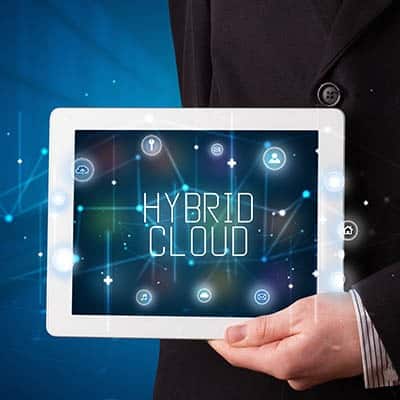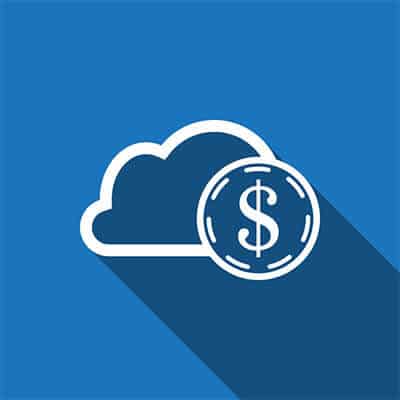Problems You May See with Cloud Services Most of the cloud services companies will deploy are “as-a-Service” products designed to cut costs and provide the scalability and flexibility needed with today’s mobile workforces. As a result, there will have to be some extra diligence on the other end of this to ensure that data is secure and accessible. Loss of Service Even the biggest names in cloud computing suffer from downtime. Sure, Google, Amazon, and Microsoft’s uptime is much closer to 100 percent than they are to 99 percent, but you could still suffer from some downtime. Being sure that your staff is notified when planned outages are scheduled, it will eliminate some of the concern they have. Data Loss and Breaches Nowadays, hackers and cybercriminals are on the lookout for vulnerabilities in systems no matter who they belong to, or how they’re used. Cloud service providers typically maintain very strong security standards, and tend to use powerful tools to ward against unauthorized access to their drives. Compliance Issues Many compliance regulations require built-in transparency and sometimes that can be difficult when your organization uses cloud services. Additionally, regulations that call on proof of security may be a headache for your organization. There are resources on the market that are built to help your organization keep in compliance, but if you choose to trust SRS Networks with the management of your IT infrastructure, you will find that our IT professionals can ensure data integrity, keeping your business safe from rebuke. If you use cloud-hosted resources for your business, understanding where the holes are can keep you from having problems with platform security and data integrity. Call the IT professionals at (831) 758-3636 today to learn more about cloud security.
What Software-as-a-Service Really Is To really get a handle on SaaS and its benefits, let’s examine it in what is likely its most well-known utilization: the streaming services offered by Netflix. Really, Netflix streaming effectively works the same way that SaaS works for organizations that make use of it. Subscribers to Netflix’s streaming service pay a monthly fee to access a shifting library of content as much as they want, on a variety of devices. Similarly, SaaS allows businesses to utilize up-to-date versions of crucial business programs, also billed on a month-to-month basis. This results in additional similarities, which translates positively for the user. The Benefits of SaaS Accessibility Netflix enables its users to view content from practically anywhere, provided they have an account, a compatible device, and a connection to the Internet. SaaS works in the same way, opening a business to greater opportunities to productivity. Scalability As a bonus, both options can easily be scaled to better fit one’s needs… a Netflix account can be shared between up to five user profiles, and different tiers allow different numbers of profiles to be used simultaneously. As for SaaS, an agreement can usually cover as many users as a business would need, allowing for new hires, departing employees, or shifting responsibilities. Cost Efficiency Now, you may be thinking that it would ultimately be less expensive to simply procure a given software solution and maintain it in-house. However, you need to consider the additional investments that this approach will require of you… like acquiring and maintaining the hardware needed to support these solutions. These costs alone would almost certainly negate any “savings” you’d see from managing your software yourself. Security Using older software that isn’t kept up-to-date can lead to vulnerabilities. The SaaS model means the software is always kept secure via regular updates from the developer. California businesses can rely on SRS Networks for a wide assortment of their IT needs, including SaaS. Learn more about what we offer by calling (831) 758-3636 today.
Many businesses, concerned about the security of their data have some trepidation about pulling the trigger on moving to a cloud platform. For these companies, private cloud servers may fit their needs, but the money spent designing the right cloud solution, implementing it, and constantly maintaining it may be outside of their budget constraints. Today, businesses have found a solution, that is creating a hybrid cloud environment that allows them to protect the applications and data they need the most control over, while still utilizing public cloud resources that allow them to curtail costs a bit. There are extra costs associated with moving to a hybrid cloud, however. They will likely still be more attractive than the costs your business would incur with only a private cloud infrastructure, but they are going to cost you more than utilizing only public cloud resources. Some additional costs that you should be aware of include: Management Managing a hybrid cloud environment brings some additional challenges. When managing private cloud resources, your IT administrator only needs to focus on managing the servers and network. With a hybrid, IT admins are now being asked to manage the on-premise cloud as well as the public cloud (or clouds) you choose to integrate into the hybrid environment. More coverage means more cost. Integration and Customization The whole benefit of the hybrid cloud, apart from the initial cost savings you’ll see by incorporating public cloud resources, is that you will be able to set up your IT infrastructure in a way where it works best for your business. To do this, it will likely take more time dealing with cloud vendors and finding the right setup. Software In order for the hybrid cloud to be effective, you will need an integration platform that provides the ability for on premise-hosted applications and data to work with externally-hosted applications and data. This software, often called middleware, will take time and effort to properly incorporate. Storage The long-term storage costs associated with a hybrid cloud rollout can be wildly variable, so setting up the platform to account for volume growth at the beginning has to be a consideration as adding it as you go could get extraordinarily complicated. Compliance Most businesses have to meet some type of regulatory compliance and, if using a hybrid platform, all of their external resources will have to be audited to ensure that they meet the standards put forth by the regulatory body, whether they be mandated by federal or state agencies or from an industry-based body. A hybrid cloud system is an advantageous platform for any business if you can handle the massive amount of considerations and variable costs that come with integrating one. For more information, call the IT professionals at SRS Networks today at (831) 758-3636.
Cloud Considerations Businesses and individual users are both finding cloud resources to be exceptionally helpful, as they provide access to services such as file storage, file sharing, and web-based applications at the cost of a small monthly payment. Businesses are also now able to accurately gauge how much capital they have available. This might make you ask, “What’s the issue with cloud services?” Well, this access and affordability means that the cloud is a go-to resource for people hoping to get answers to their technology problems, which can in turn create whole other ones. Here are some topics to consider when thinking about how effective cloud computing can be for your business. Hardware Cloud computing means that your organization doesn’t need a centralized computing infrastructure on-site. With this in mind, however, some businesses still like to keep parts of their data infrastructure hosted on-site, and this requires hardware and tools needed to provision the system for your business’ needs. If you aren’t careful about this implementation process, you could see drastic differences in your business’ IT budget. It’s important to understand how you want to use these private and hybrid cloud environments so you’re not wasting resources. The Limitations of Hosted Hardware The cloud isn’t an endless computing resource. The more you use it, the more you will have to pay. Even if money isn’t a major issue for your organization, you need to be aware of the limitations of your hosted software, storage, and resources so that you can effectively plan and use your hosted hardware for your organization’s needs. Potential Expansion Your business will hopefully grow and produce more revenue, so your IT will play an important part in influencing this growth. It should be able to scale according to your needs. Cloud platforms will make it easier to grow, and through enhanced transparency you will be able to take better advantage of your business’ cloud resources. Of course, not every business will utilize the cloud in the same way. Unless you have tons of capital to throw away on trial and error, it is easier and more cost-efficient to work with trained IT professionals for your cloud needs. Whether you need a public, private, or hybrid cloud solution, we want you to know that SRS Networks will be there to assist you every step of the way. To learn more, reach out to us at (831) 758-3636.
What Can You Use the Cloud For? Do you need communications tools? Check. Hosted-VoIP and email. Do you need processing power? Check. Infrastructure as a Service and Platform as a Service. Do you need applications and storage? Check. Software as a Service and hosted Storage. The truth is that anything you can do with onsite hardware, you can accomplish with cloud resources that are billed per user, per month; or, per gigabyte. In the cloud, you can quickly deliver your business functionality, redundancy, and everything else that it needs to be effective. It works great for full-time, part-time, and temporary workers, alike; and, can be leveraged quickly, with only short setup processes before it is a viable, and mostly secure tool. What Are the Drawbacks? The drawbacks of cloud computing, especially in environments that are hosted by an outside service provider, are typically caught up in the lack of control your organization has over the hardware itself. Businesses can choose to create onsite “private” cloud systems that return the large capital costs to the company, but provide controls and management over their hardware systems as well as the accessibility needed to remotely access the system, among the other superlative aspects that cloud access brings to an organization’s IT. One of the major drawbacks is, ironically, cost. Since the IT infrastructure used to run the solutions is housed and managed by the service provider, they price solutions accordingly. If your organization needs 30 cloud licenses, the solution could get costly quick. What’s worse, if you have people leave your employ, and you don’t reactively cancel the cloud solution before your monthly license is up, you will be on the hook for the cost of the monthly fee. If this doesn’t seem like a costly scenario, think about the times when you assemble teams that work on projects. These projects require three or four cloud-based applications and other resources. If each member of a project team is costing the business hundreds of dollars a month in software, a month or two paying for solutions for a large team that has all but wrapped up its project just decimates the ROI of the project. In order to ensure that you aren’t paying for cloud-based resources that you don’t need to pay for, having a strategy in place to manage all of your organization’s cloud-based resources is important. At SRS Networks, we have a tried-and-true system to ensure that your cloud resources are managed and that you aren’t paying for more than you need to. Call us today at (831) 758-3636 for more information.
Cloud Benefits Most applications that your business could use will have a cloud option, but rather than purchasing the solution outright, you’re buying them “as a service.” What this means is that you get full access to the application, as well as hosting, access control, and security options for protecting the data, all without having to manage or maintain the systems; you just have to pay a monthly rate that can easily fit into any budget. The traditional method of software acquisition involved purchasing licenses on an annual basis, but this prevented organizations from purchasing software in the short term. By purchasing software as a service, businesses have more freedom to try new services. Additionally, software as a service is more mobile than traditional methods of accessing solutions, as they can be used by anyone on an Internet connection. This makes it particularly useful for project management and collaboration. How to Pick Your Cloud Services You know what services your organization offers, so naturally, you want to select cloud-based services based on what your business needs. This could be anything from services that help you manage workflow, customer relations, marketing, productivity, and support. The biggest pain point to consider for all of these is the annual cost of such a service, and how it affects your budget. Are there other opportunities for your organization to improve operations? Are they lacking any tools? Any non-legacy software solution can be deployed through the cloud, so addressing your needs becomes easier in general if you know what to look for. The Cloud for Management You can centralize your management through certain Customer Relationship Management software, giving your organization more control over how it manages its customer relationships, including the management of tasks, interactions, and contacts. Professional Services Automation and Enterprise Resource Planning include CRM software to provide organizations with resources to run an entire business, from the procurement stage to distribution. The Cloud for Productivity Businesses that utilize the cloud for productivity have ways to provide scalable resources to end users in a way that gives greater control over software costs. Every organization needs a spreadsheet program, word processor, and presentation software. Cloud-hosted solutions give businesses greater control over these kinds of solutions. There might be other industry-specific software applications that are used exclusively by organizations like yours. If there isn’t a solution out there that does what you want it to, you can purchase server space and host the application on your own cloud platform–or, better yet, get a managed IT provider to handle this responsibility for you. Security Some organizations use the cloud for security to keep unwanted intruders and malware off of their network. Most businesses take advantage of local network protection, but subscribing to security services through the cloud gives you access to more dynamic solutions as a whole that are needed to guarantee systems remain safe and secure. Communications The cloud is exceptionally helpful for communication solutions. Companies are making the jump to Internet-based phone systems, cloud-hosted email, and collaboration platforms that allow for work to get done across departments. Does your company need more cloud-based resources? We can help. To learn more, reach out to SRS Networks’s IT professionals at (831) 758-3636.
Understanding How Business Computing Has Changed It wasn’t all that long ago that if you wanted to watch a movie, you needed an actual physical copy of that movie in your possession at the time. However, with the assorted streaming services available to us today for a monthly fee, all we have to do is find and access the movie we want to watch. The same can be said of television series – if there’s a particular episode you want to watch, doing so on demand has never been easier. This “Netflix Model” runs parallel to how business software has been delivered. Like was once the case of a movie, there was once no other option than to purchase a license for a particular software solution for each user that required it. The same could be said of many other business requirements – if it was needed, it needed to be purchased outright. Today, acquiring solutions for a business is more similar to the Netflix approach than it is going to a video store to pick up a copy of what you want. Why Cloud Computing is Now the Standard As you might imagine, there are quite a few reasons that companies like Adobe and Microsoft now offer their software titles via the cloud, rather than selling their customers installation codes or discs. As cloud titles, Adobe Creative Cloud and Microsoft Office 365 offer their users a few key benefits over the traditional method of software acquisition… while enjoying a few key benefits themselves at the same time. Reduced Piracy By its nature, cloud-hosted software greatly reduces the chance of software piracy, as the solution remains protected by the developer, accessed by approved users. Naturally, other developers like this idea, and are therefore motivated to offer their titles in this way as well. Reduced Requirements for Businesses A business that leverages a cloud solution will find that these solutions can help diminish their need of on-site infrastructure. Take, for instance, the email solution that comes with Microsoft Office. Once, businesses would need to invest in and maintain the equipment to host their email. Now, thanks to cloud solutions, this large financial expense can be eliminated. Reduced User Restrictions I’m sure you’ve been in this position before: you have the time to get something accomplished, but because you lack the resources to do so in the moment, the opportunity is wasted. Many cloud-based solutions can help eliminate the likelihood of this situation by allowing a user to leverage more than one device. Adobe allows their Creative Cloud users to boost their operational flexibility by utilizing two devices. Reduced Financial Toll While a user once needed to commit a large, lump expense in order to procure a software title, cloud computing’s delivery has shifted the way things are done. Now, with solutions delivered based on a regular service fee, businesses can adjust their budgets to more fluidly incorporate an operating expense, as compared to a significant, one-time charge. In this way, it makes it generally cheaper for businesses to incorporate software titles into their workflows. Which sounds better to you… $3000, up front, for one version of a software title, or a monthly fee of $25 for the latest version of that title, with updates managed by the provider? Is the Cloud […]
The cloud has proven to be an extremely useful tool for the modern business. Not only does it provide anywhere-anytime access to applications, processing, storage, et al; it also delivers those products as a service, allowing you to budget for recurring costs rather than major upfront ones. This provides your organization with functional, supported, and secure computing environments that eliminate a lot of the support costs that traditional computing environments require. It sounds like a perfect scenario for small and large businesses alike, but things aren’t always what they seem, as a lot of cloud users have found that they have incurred several hidden costs by using cloud platforms. Today, we take a look at these hidden costs.
- 1
- 2








